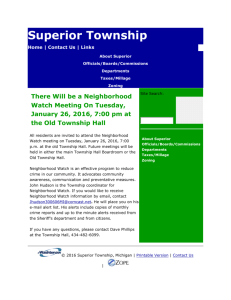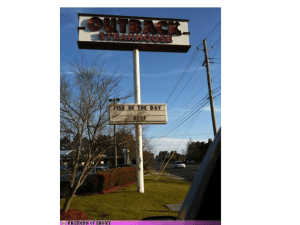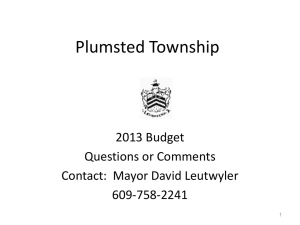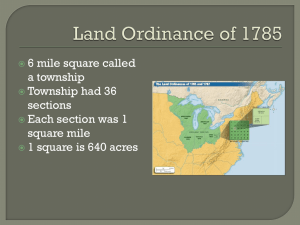Waltz Park Improvement
advertisement
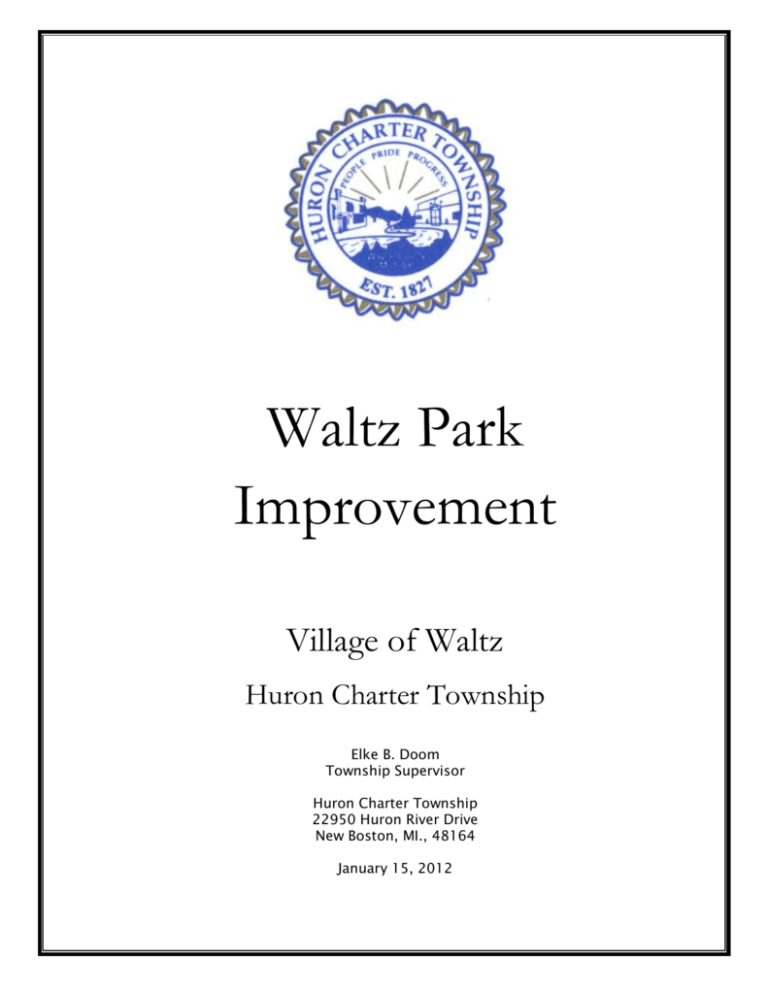
Waltz Park Improvement Village of Waltz Huron Charter Township Elke B. Doom Township Supervisor Huron Charter Township 22950 Huron River Drive New Boston, MI., 48164 January 15, 2012 Statement of Problem The Village of Waltz was established in 1887. It was built in the style of many turn of the century towns that flourished to support the farming industry. Homes and businesses are crowded together, roads are narrow, sidewalks are few, as is typical of homes built before ordinances and building codes. Due to the early development and layout of the village, there is no active or passive recreation available to the residents. Facts The Village of Waltz is located in the southwest corner of Huron Township and borders Monroe County. In 1947, 22 acres of land was donated by the Kahlbaum family to the Waltz Improvement Association (a group of civic-minded residents) for recreational use. For many years, the land was used for annual festivals, ball games, and homecoming festivities. In time the activities ceased, buildings fell into disrepair; little was left but memories of long ago events. In 2009, the Waltz Improvement Association deeded the 22-acre parcel to the Township of Huron. On this site sits a covered pavilion, crumbling outbuildings, and a bathroom. The site has a working septic system for the bathroom, water, electricity, 4 stadium lights from the days of ball playing. The buildings are in disrepair, the bathrooms are not handicap accessible, and the largest barn is unsafe due to years of water leakage. The stadium lights do not work and the ball field has become a grassy field. In addition, the township has acquired an adjacent 80-acre parcel through a tax foreclosure and plans to develop both parcels into one large recreation area and nature park. This 102 acre combined parcel was officially named Waltz Park in 2010. As it will take many years to develop the entire area of land, the focus of this Capstone project will be on the 22-acre parcel donated to the township in 2009. The Project For purposes of this class project, I will focus on phase one, two, and three on the 22-acre parcel. Phase one and two are underway and phase three is anticipated to be completed by the fall of 2012. The long-term vision for this project will be to develop the entire 102acre site into an active and passive recreation area for use by all of our township residents. I envision park benches, walking/biking trails, fields for soccer and baseball, playground equipment, concession stands and handicap accessible bathrooms. Phase 1 o Order boundary survey of the 22 acre parcel o Order wetland survey of the 22 acre parcel o Engage engineering firm to assist in layout and design of a regulation ball field and soccer field o Engage engineering firm to work with the County for required field drainage o Pull permits required by the County for drainage requirements Phase 2 o Determine which outbuildings can be restored o Determine which buildings should be tagged as unsafe o Refurbish existing (non-handicap) bathrooms o Bring electrical service up to code o Enhance and enlarge existing gravel parking lot Phase 3 o Lay drain tile to remove water from the future field(s) o Begin construction of a regulation ball field o Restore the concession stand and/or outbuildings o Refurbish the existing bathroom o Install 2 park benches Anticipated Project Benefits The benefits from this project will be: To provide the community a park with active and passive recreational activities for all ages Provide the Little League with a regulation playing field to ease the shortage of playing fields in the township Provide benches for people to sit and enjoy the park The final and less tangible benefit from this phase of the project is to engage the citizens in planning the future phases of the entire park area Estimated Cost of the Project Survey of the 22 acre parcel $7,800 Commission a drainage study $6,000 Bring electrical service up to code $7,800 Take inventory of the condition of existing buildings $0 (volunteer inspections by our building official) Repaint and repair bathrooms $0 (supplies donated by local merchants and labor provided by local service organizations) Build a regulation size ball field $26,000 Refurbish pavilion and concession stand $12,000 (materials only) labor donated 2 park benches $800 Parking lot expansion $0 (gravel donated from developers, leveled by township DPW workers) Total project cost : $60,400 Project Time Frame Phase 1 to be completed by June of 2012 Order survey of the 22 acres Order wetland survey of the 22 acres Engage engineering firm to assist in design and layout of a regulation ball field and soccer field Engage engineering firm to work with the County for required field drainage Pull permits required by the County for drainage requirements Phase 2 to be completed by August of 2012 Enhance and enlarge existing gravel parking lot Determine which outbuildings can be restored Determine which buildings should be tagged as unsafe Refurbish existing (non-handicap) bathrooms Bring electrical service up to code Phase 3 to be completed by October of 2012 Lay drain tile to remove water from the future field(s) Begin construction of a regulation ball field Restore the concession stand and/or outbuildings Refurbish the existing bathroom Install two park benches Extent of Cooperation Required The cooperation of the township Board of Trustees is paramount to the success of this project. The Huron Township Recreation Commission will participate in the planning, development and completion of each phase of development. The Little League has offered funds and labor to build the ball field and their input ideas and financial contribution is necessary. Wayne County’s annual distribution of millage dollars is critical to the completion of the various phases of this long-term project. In-kind donations of labor and materials are needed for successful completion of the phases. Volunteers will have to pitch in to refurbish buildings and the bathroom. The building department will need to assist on all inspections. Evaluation The project can be measured by in-kind donations of materials, volunteer hours contributed, and the timely completion of the three phases.


